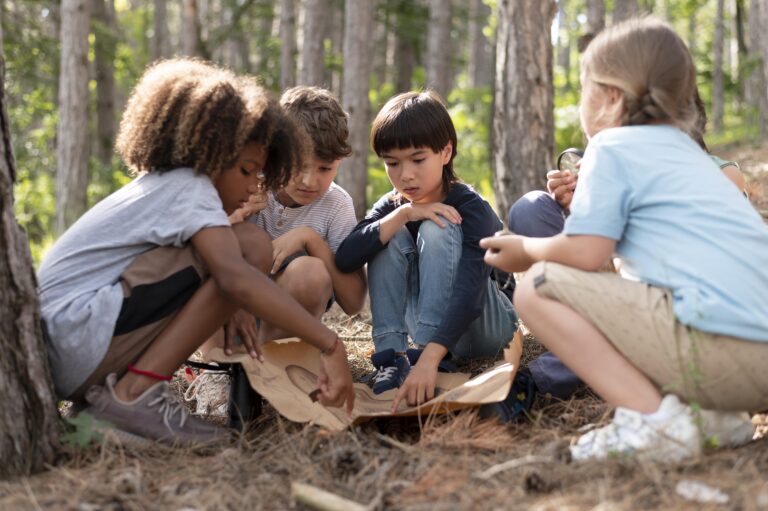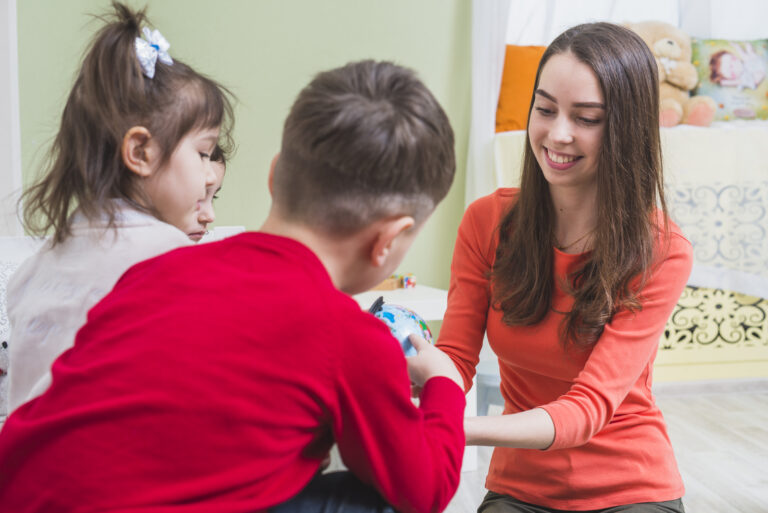Collaborating with Families: Autism Schools and Summer Planning for Skill Maintenance and Growth
Transitions can bring both excitement and uncertainty, especially for children with autism who rely on routine and structure for comfort. As summer break approaches, the risk of losing essential skills gained during the school year increases if the transition is abrupt or if summer lacks intentional planning. That’s why partnership between educators and families is crucial—not only to maintain progress, but to spark joyful growth and autonomy. True collaboration ensures that summer routines are adaptive, skill-enriching, and centered on the individual needs and strengths of each child.
This comprehensive guide explores how autism-specific schools and educators can team up with families to create purposeful summer schedules, proactively maintain core skills, and include the child’s voice in every step. By sharing strategies for effective communication, co-created visual supports, and nurturing flexibility, this article aims to empower both professionals and caregivers in guiding children through a confident summer and seamlessly back to school in the fall.
The Importance of Summer Planning
Summer represents both a break and a bridge—between grade levels, between support systems, and between the predictability of school and the variety of home or camp life. For neurotypical children, this change can be energizing. For many children with autism, though, drifting from routine can create stress, increase anxiety, and accelerate the loss of hard-won social, academic, or daily living skills.
Families often report regression in communication, self-management, or academic ability after a long, unstructured summer. Therefore, the goal for autism-focused schools is not just to prepare children for change, but to actively collaborate with families so that summer routines.
- Support previously learned skills.
- Foster new growth,
- Prioritize emotional wellbeing, and
- Meaningfully include input from the child to boost engagement and ownership.
Laying the Foundation: School-Family Partnership
Why True Partnership Matters
When educators and families join forces, every child benefits from seamless, consistent support across environments. The partnership isn’t just about information exchange, but about mutual respect, empathy, and shared responsibility.
Benefits of a Collaborative Approach:
- Families gain confidence and feel validated as important voices in their child’s education.
- Educators receive critical insights about the student’s home life, preferences, and summer possibilities.
- Children experience less confusion or regression, leading to better regulation and readiness for the next school year.
Keys to Productive Collaboration
- Open Communication: Consistent, two-way sharing about goals, concerns, progress, and plans.
- Cultural Humility: Recognizing that every family carries its own traditions, stressors, and priorities.
- Individualization: Rejecting “one-size-fits-all” plans in favor of child- and family-centered strategies.
- Transparency: Making expectations, schedules, and roles as clear as possible.
- Celebration of Strengths: Acknowledging and building on the child’s unique interests, talents, and communication styles.
Co-Creating Summer Schedules and Routines
The Risks of Losing Structure
For children with autism, sudden gaps in routine can mean lost opportunities for practice, emotional dysregulation, and increased challenging behaviors. A collaboratively crafted summer plan introduces structure—but keeps it flexible and individualized.
Getting Started: School-Based Planning Meetings
The last weeks of school are an ideal time for educators and families to come together. Planning meetings can be virtual or in-person, and should cover:
- The student’s current skills and progress
- Which goals should be maintained or advanced over summer (communication, self-care, social, academic, etc)
- What the family’s summer context looks like (vacation, caregivers, camps, therapies)
- The child’s preferences, motivations, and aspirations for summer
- Resources and tools that have been most successful at school
Sample Agenda for a Summer Planning Meeting
| Topic | Guiding Questions |
| Strengths and Wins | What has the child achieved this year? What are they most proud of? |
| Maintenance Goals | Which skills would be most helpful to keep strong? |
| Growth Goals | What new skill is the child eager to learn or practice? |
| Summer Set-up | What routines are already set, and what will change? |
| Barriers | What might disrupt plans? How can we problem-solve in advance? |
Designing a Visual Summer Schedule
Visual supports—calendars, daily agendas, checklists—offer autistic students a concrete way to anticipate what will happen, when, and with whom. Involving the child in building their schedule increases buy-in and reduces anxiety.
Best Practices:
- Use pictures (photos, clipart, symbol-based images) to represent activities, meals, therapies, playtime, and rest.
- Include “anchor points” from the school routine—like a morning song or a snack structure—to foster comfort.
- Allow flexibility: designate “choice” blocks where the child decides the activity.
- Laminate reusable schedules or make daily checklists that can be marked off.
- Review the schedule every morning together, update as needed, and give the child a say in sequencing.
Maintaining Academic and Therapy Skills
Bridging the School-to-Home Gap
Educators and therapists possess specific techniques for literacy, numeracy, or social-emotional growth. When families are trained and empowered to use similar methods at home, skill maintenance is more likely.
- Share Specific Strategies: Teachers can create short “how-to” sheets or videos for reading prompts, math games, or language-boosting routines.
- Create “Skill-of-the-Week” Calendars: Send home a calendar highlighting one or two focused skills each week with suggested activities—like “using new vocabulary,” “counting in real life,” or “greeting neighbors.”
- Home Book Bags and Materials: Loan high-interest books, puzzles, AAC devices, or sensory tools for continued practice.
- Digital Resources: Recommend apps or online platforms familiar from the classroom for families to use together.
Incorporating Therapy into Daily Life
Occupational, speech, or physical therapy goals can be practiced during ordinary summer activities. For example:
- Cooking can reinforce following directions, sequencing, vocabulary, and fine motor skills.
- Walking in the park may provide opportunities for social interaction, sensory integration, and movement goals.
- Grocery shopping can support money concepts, requesting items, or practicing community skills.
Encourage families to embed practice opportunities into the natural rhythm of the day, avoiding workbooks-only approaches.
Centering the Child’s Voice in Summer Planning
Why Child Input Matters
Empowering children to take part in their own planning, no matter their communication style or age, increases motivation, reduces stress, and builds essential self-advocacy skills. Even students with complex communication needs can express preferences and participate in decisions.
Ways to Include Child Perspectives
- Choice Boards: Present visual options and ask the child to indicate preferences for activities, foods, friends to see, or outings.
- Interviews: Use simple questions (“What do you want to do this summer?” “What makes you feel calm/happy?”) and document answers using drawings, photos, or AAC devices.
- Goal Setting Sessions: Set “summer goals” together, like learning to ride a bike, visiting a favorite playground, or trying a new recipe.
- Story Building: Invite the child to help create a social story about summer, using their own words or images, to anticipate positive experiences and discuss worries.
Teaching Self-Advocacy
Summer is also an ideal time to practice communicating needs, boundaries, and interests in new settings. Encourage families to build “I want,” “I need,” and “No thank you” scripts into daily routines and outings. Recognize all forms of communication equally—spoken, signed, through devices, or nonverbal gestures.
Strengthening Home-School Communication in Summer
Maintaining regular home-school communication is critical, especially if students attend camps or extended school year (ESY) programs led by new staff.
Communication Tools:
- Daily or Weekly Logs: Use journals, emails, voice memos, or apps to share highlights, challenges, and adjustments.
- Scheduled Check-ins: Set up monthly video calls or phone chats to tweak summer plans as needs evolve.
- Resource Banks: Provide families with contact info for support staff or trusted resources in case of urgent concerns during summer.
Regular updates help families feel supported, rather than isolated, in carrying out summer plans.
Supporting Emotional Regulation and Behavior Through the Summer
Transitioning out of school can disrupt emotional equilibrium. Proactive supports can help maintain regulation.
- Calm Down Kits: Assemble a “toolbox” of preferred sensory items, fidget toys, weighted objects, or comfort items to use at home or on the go.
- Emotion Check-ins: Integrate morning or evening check-ins using visuals or emotion thermometers to help the child label and process their feelings.
- Consistent Routines for Self-Care: Maintain similar sleep, meal, and hygiene schedules to reduce unpredictability.
- Social Narratives: Continue using social stories to explain upcoming changes, trips, or new people.
- Positive Reinforcement: Recognize effort and progress, not just success, to keep spirits high and confidence growing.
Practicing Social Skills and Community Participation
Summer often opens new avenues for community involvement through camps, recreational classes, or neighborhood events. These settings can be rich grounds for practicing social skills—greeting peers, sharing, resolving conflicts, and managing group transitions.
Educators should provide families with tips on:
- Preparing for unfamiliar settings (social stories, mapping out the location, reviewing sensory expectations).
- Practicing greetings, introductions, and conversation starters at home.
- Using visual supports or scripts for group activities and making requests.
- Preparing “safe space” plans for breaks when social or sensory overwhelm arises.
Families can support social growth by arranging regular playdates, familiarizing children with new environments ahead of time, or engaging in role-play scenarios.
Planning for Flexibility and Unexpected Changes
Rigidity can be a challenge for many autistic children; therefore, it helps to intentionally practice handling the unexpected during summer.
- Build in “Surprise” Blocks: Leave blank spaces on the visual schedule occasionally for “something new!” and celebrate flexibility.
- Practice Transitioning Away from Preferred Activities: Use timers and visual countdowns to signal upcoming changes.
- Prepare Scripts for Handling Disappointment: “It’s okay to be sad when plans change. I can take three deep breaths and ask for help.”
Educators and families together can gradually nurture adaptable mindsets, making transitions less stressful over time.
Preparing for Fall: Documenting Growth and Planning Ahead
As summer winds down, families and schools should reconnect to reinforce the link between settings and prepare for the next school year.
- Request families document progress, new skills, and positive experiences through photos, journals, or videos.
- Set up “reunion” meetings to share summer stories, address concerns, and preview fall routines.
- Update individualized education plans (IEPs) or behavior plans with new insights from summer learning.
- Send families a visual “Back to School” schedule or social story in August to reignite familiarity and excitement.
Sample Summer Skill Maintenance and Growth Schedule
| Time of Day | Example Activities | Skill Areas Targeted |
| Morning | Visual schedule review, breakfast | Communication, routine |
| Mid-Morning | Neighborhood walk | Physical, community, sensory |
| Late Morning | Reading together, story creation | Literacy, language, creativity |
| Lunch | Meal prep, setting table | Life skills, sequencing |
| Early Afternoon | Playdate or park outing | Social skills, self-advocacy |
| Mid-Afternoon | Sensory bin, calming activity | Regulation, fine motor |
| Late Afternoon | Math game or shopping | Numeracy, community practice |
| Evening | Reflect on the day, set tomorrow’s choices | Self-regulation, planning |
Adapt the framework to your child’s interests and needs, always reviewing the plan with them.
Final Thoughts: Optimism, Resilience, and Shared Success
When autism-focused schools and families join forces, summer loses its unpredictability and becomes a season of opportunity. With planning that is child-centered, strengths-focused, and sensitive to both home routines and school recommendations, the probability of maintaining—and even expanding—core skills rises dramatically.
Most importantly, when children are encouraged to voice preferences, help build schedules, and reflect on their own growth, they move toward a new level of self-confidence and autonomy.
Collaboration isn’t a checklist; it’s an ongoing conversation, built on trust and a shared commitment to every child’s wellbeing. As educators and caregivers plan together for summer, they not only protect the progress made during the school year but also lay the foundation for thriving transitions and fulfilling school years to come. Prioritizing social skills for kids with special needs is a key part of that foundation—helping children build confidence, connection, and a sense of belonging that lasts far beyond the classroom.
If you’re a family member or educator seeking to strengthen this partnership, start with curiosity, openness, and celebration. The road to skill maintenance and joyful growth is best traveled together—one plan, one day, and one summer at a time.




